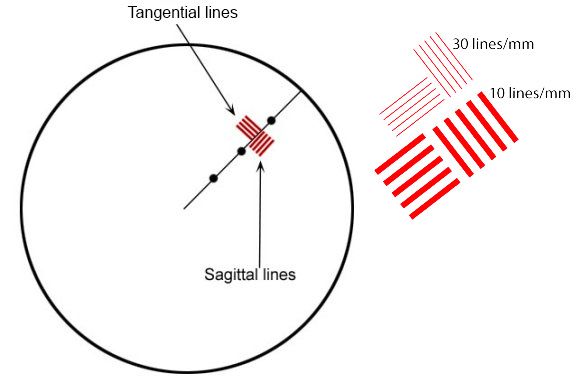Just MTF Charts
Just the Cinema MTF Charts: Zeiss Cine Lenses
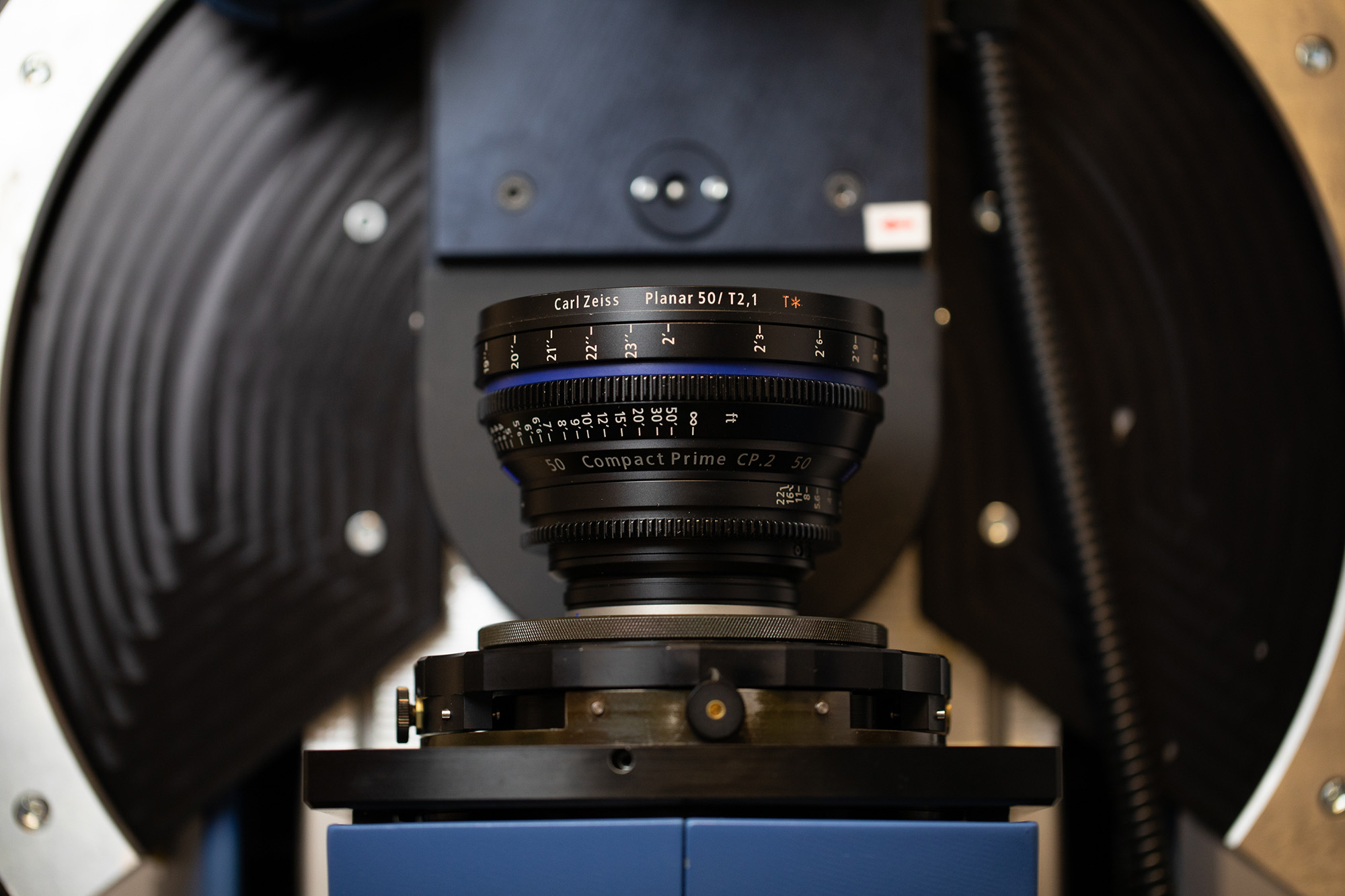
Zeiss makes a lot of cinema lenses, there are a lot of graphs in this post. Please remember for some, like the Supreme Primes and some of the CP.3 lenses we didn’t get much access to, the MTF graph is the average of just a few copies (the number of copies is identified on the graph). This will be the longest one of these posts, there are a lot of Zeiss Cinema lenses.
A Quick How to on Reading MTF ChartsIf you’re new here, you’ll see we have a scientific methodology to our approach, and use MTF charts to measure lens resolution and sharpness. All of our MTF charts test ten of the same lenses, and then we average out the results. MTF (or (or Modulation Transfer Function) Charts measure the optical potential of a lens by plotting the contrast and resolution of the lens from the center to the outer corners of the frame. An MTF chart has two axis, the y-axis (vertical) and the x-axis (horizontal). The y-axis (vertical) measures how accurately the lens reproduces the object (sharpness), where 1.0 would be the theoretical “perfect lens”. The x-axis (horizontal) measures the distance from the center of a lens to the edges (measured in millimeters where 0mm represents the center, and 20mm represents the corner point). Generally, a lens has the greatest theoretical sharpness in the center, with the sharpness being reduced in the corners. Tangential & Sagittal LinesThe graph then plots two sets of five different ranges. These sets are broken down into Tangential lines (solid lines on our graphs) and Sagittal (dotted lines on our graphs). Sagittal lines are a pattern where the lines are oriented parallel to a line through the center of the image. Tangential (or Meridonial) lines are tested where the lines are aligned perpendicular to a line through the center of the image. From there, the Sagittal and Tangential tests are done in 5 sets, started at 10 lines per millimeter (lp/mm), all the way up to 50 lines per millimeter (lp/mm). To put this in layman’s terms, the higher lp/mm measure how well the lens resolves fine detail. So, higher MTF is better than lower, and less separation of the sagittal and tangential lines are better than a lot of separation. Please keep in mind this is a simple introduction to MTF charts, for a more scientific explanation, feel free to read this article. |
CP.2 Standard Primes
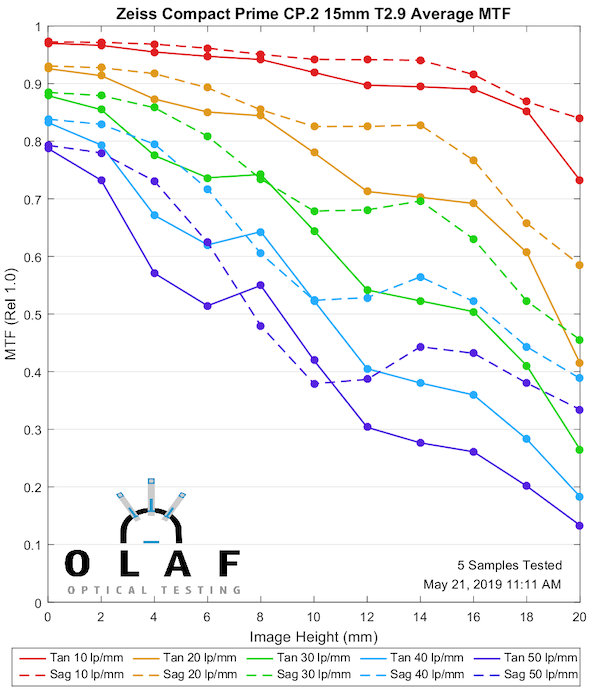
Lensrentals.com, 2019

Lensrentals.com, 2019
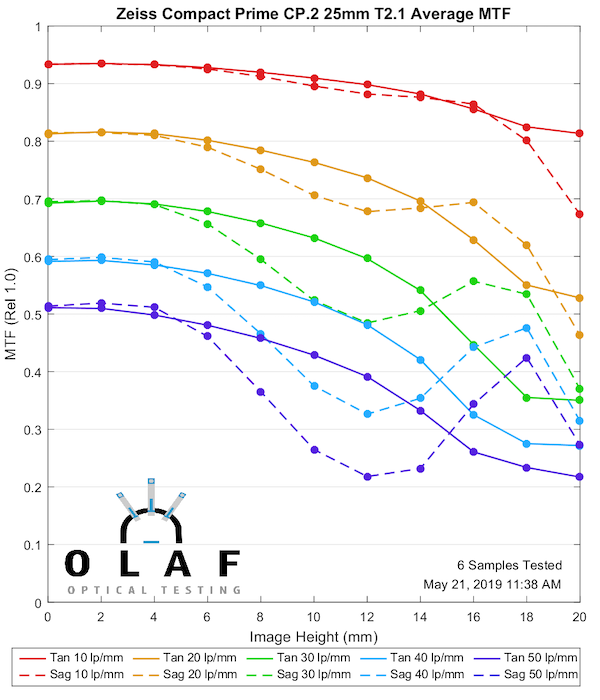
Lensrentals.com, 2019
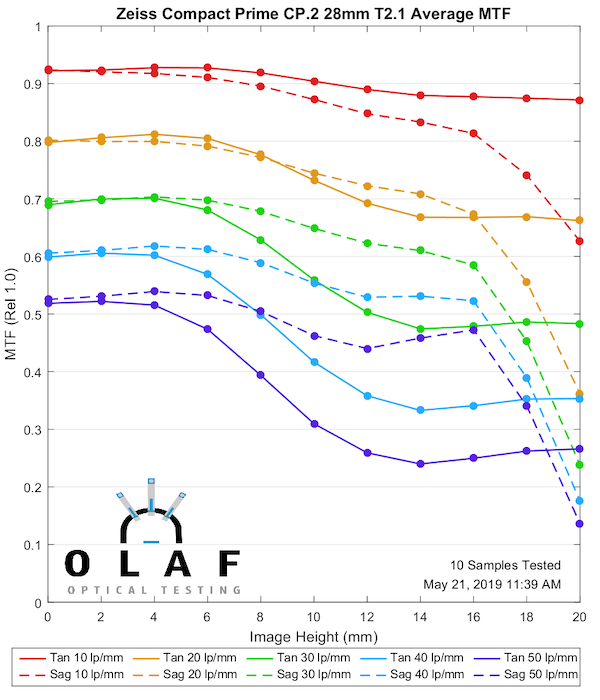
Lensrentals.com, 2019

Lensrentals.com, 2019
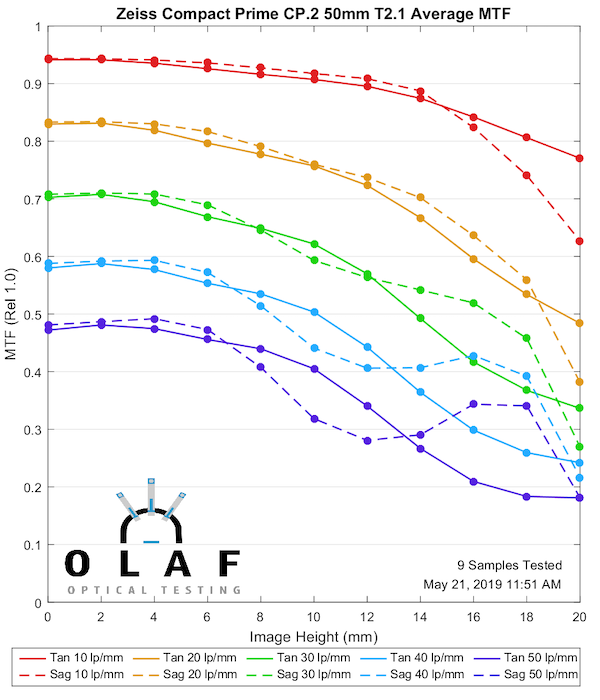
Lensrentals.com, 2019
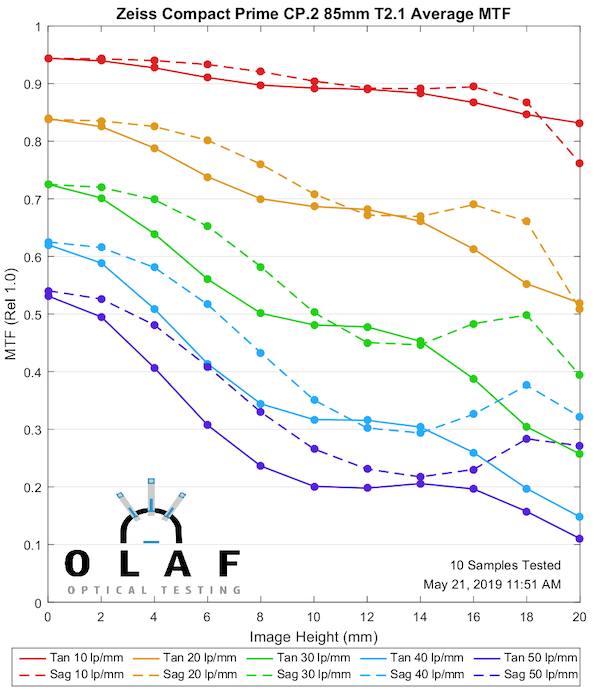
Lensrentals.com, 2019
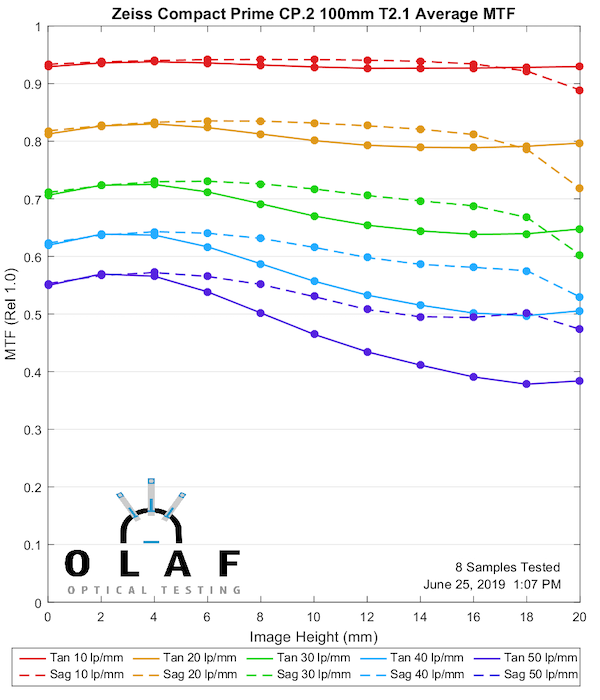
Lensrentals.com, 2019
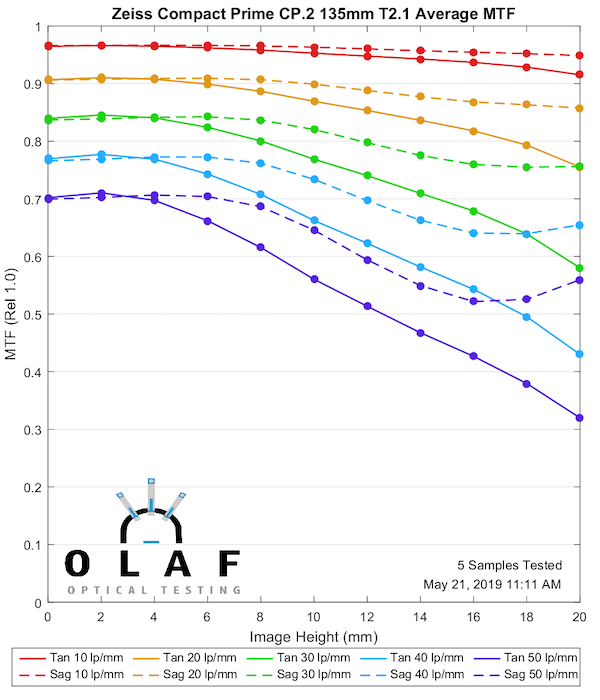
Lensrentals.com, 2019
CP.2 Super Speed Primes
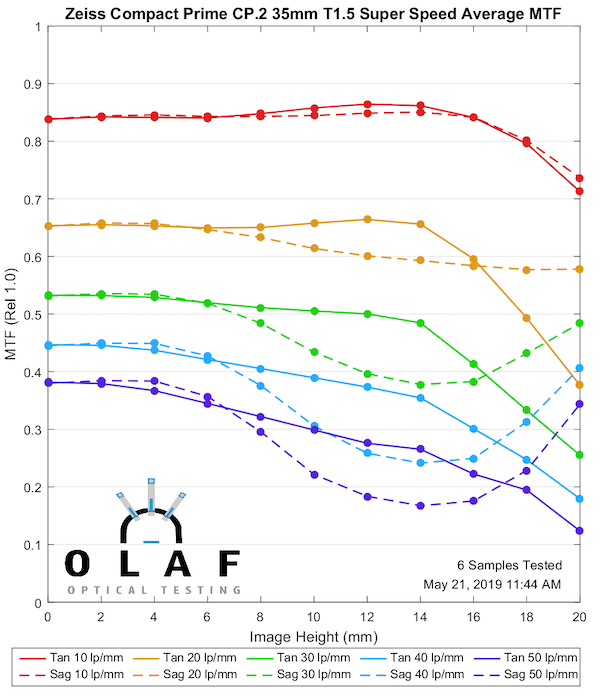
Lensrentals.com, 2019

Lensrentals.com, 2019
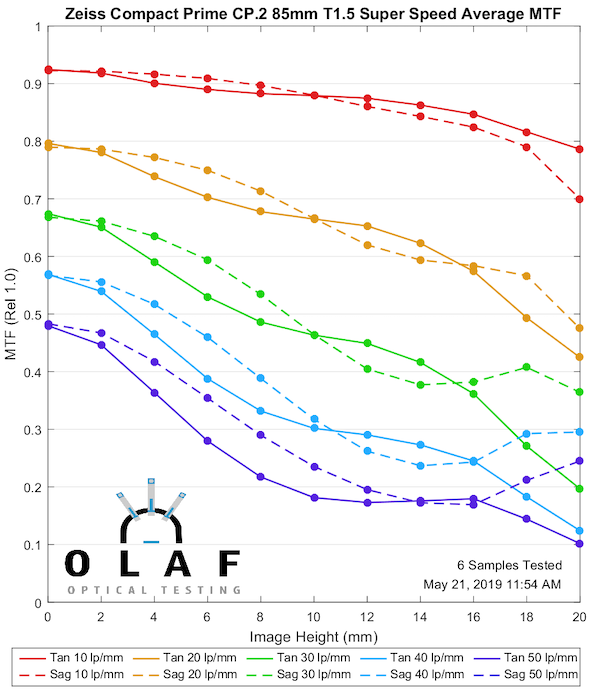
Lensrentals.com, 2019
CP.3 Primes
The original graph was incorrect. This is a corrected graph.
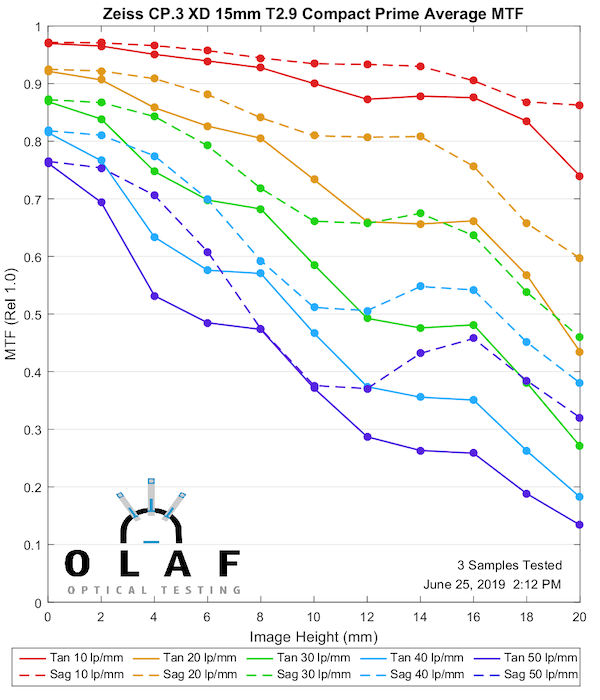
Lensrentals.com, 2019
The original graph was incorrect. This is a corrected graph.

Lensrentals.com, 2019
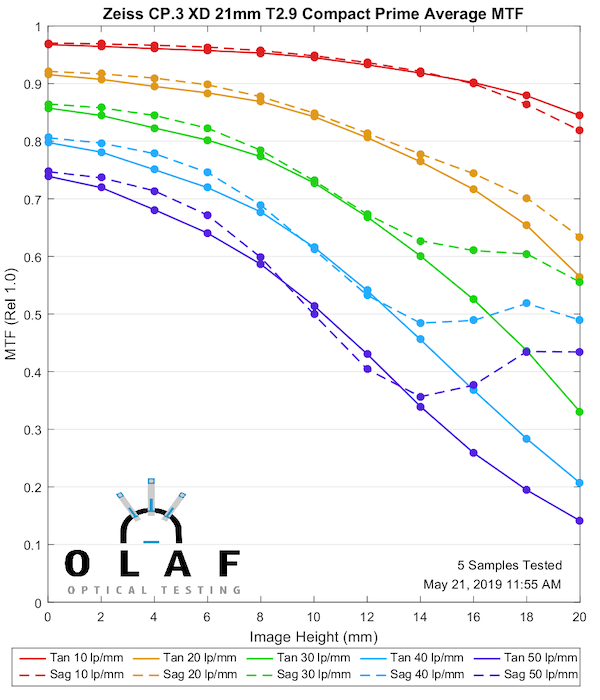
Lensrentals.com, 2019
The original graph was incorrect. This is a corrected graph.
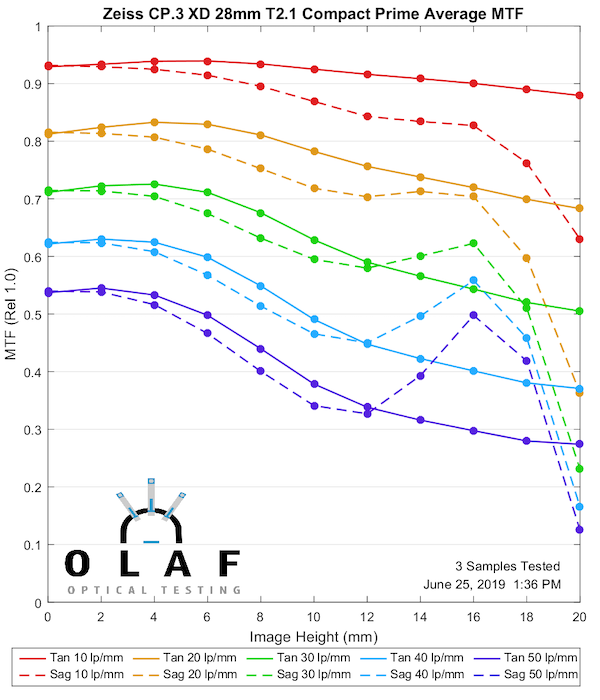
Lensrentals.com, 2019
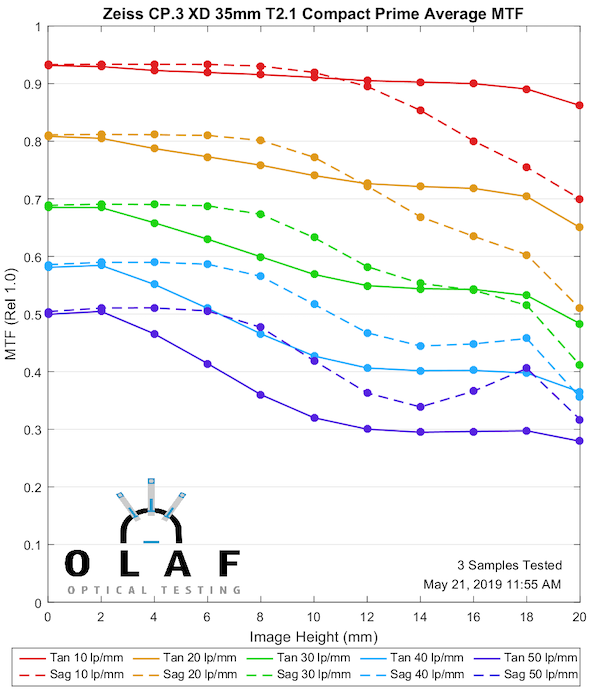
Lensrentals.com, 2019
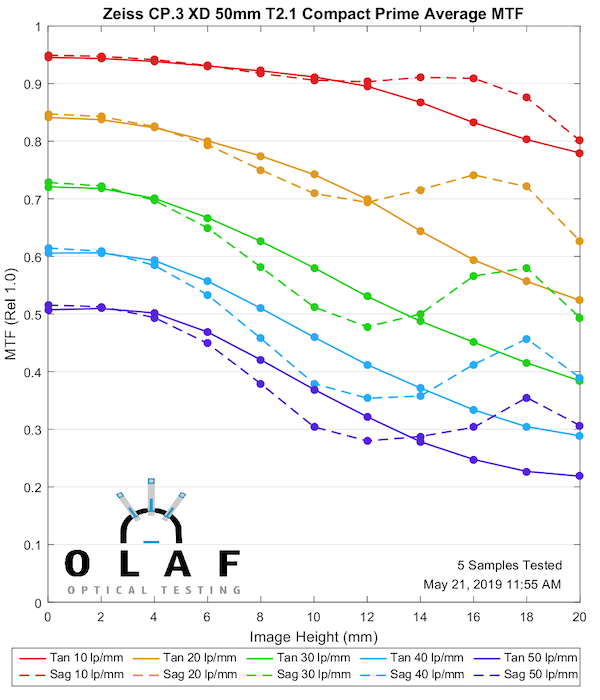
Lensrentals.com, 2019
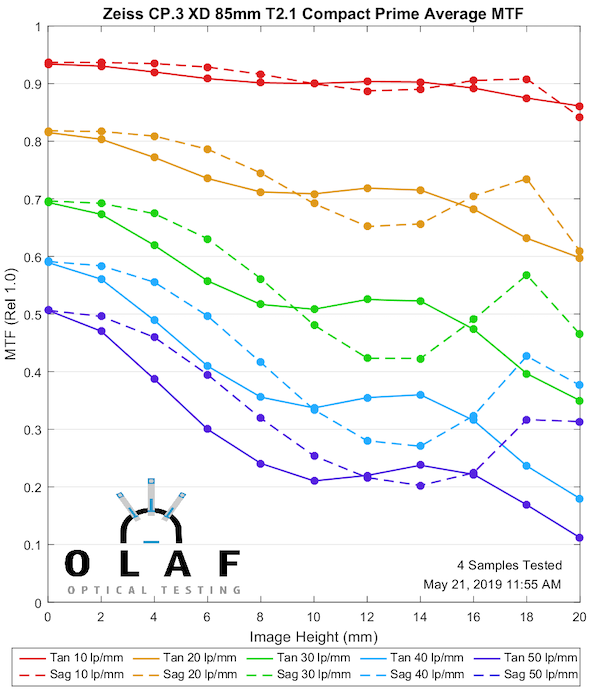
Lensrentals.com, 2019
The original graph was incorrect. This is a corrected graph.
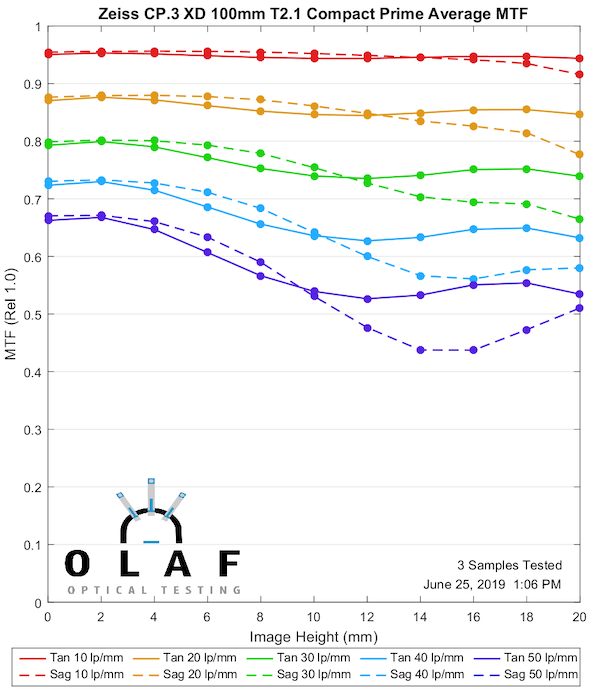
Lensrentals.com, 2019
Zeiss Supreme Primes
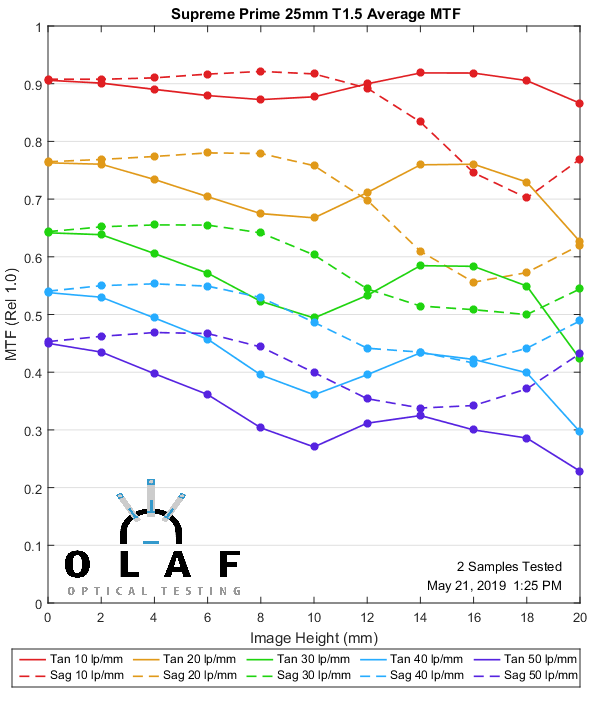
Lensrentals.com, 2019

Lensrentals.com, 2019

Lensrentals.com, 2019

Lensrentals.com, 2019
The original graph was incorrect. This is a corrected graph.

Lensrentals.com, 2019

Lensrentals.com, 2019
The original graph was incorrect. This is a corrected graph.

Lensrentals.com, 2019
Roger Cicala, Aaron Closz, and Brandon Dube
Lensrentals.com
June, 2019
Author: Roger Cicala
I’m Roger and I am the founder of Lensrentals.com. Hailed as one of the optic nerds here, I enjoy shooting collimated light through 30X microscope objectives in my spare time. When I do take real pictures I like using something different: a Medium format, or Pentax K1, or a Sony RX1R.
-
Carleton Foxx
-
Roger Cicala
-
Max Manzan
-
Someone
-
Shen Hong
-
Someone
-
Shen Hong
-
iKonOkLasT
-
Roger Cicala
-
Shen Hong
-
JordanViray
-
Brandon Dube
-
JordanViray
-
Brandon Dube
-
Brandon Dube
-
JordanViray
-
DrJon
-
JordanViray
-
MisterWU
-
Athanasius Kirchner
-
Brandon Dube
-
Andre Yew
-
JordanViray
-
Brandon Dube
-
JordanViray
-
Brandon Dube
-
Les
-
Mr.JAM
-
JordanViray
-
Fazal Majid
